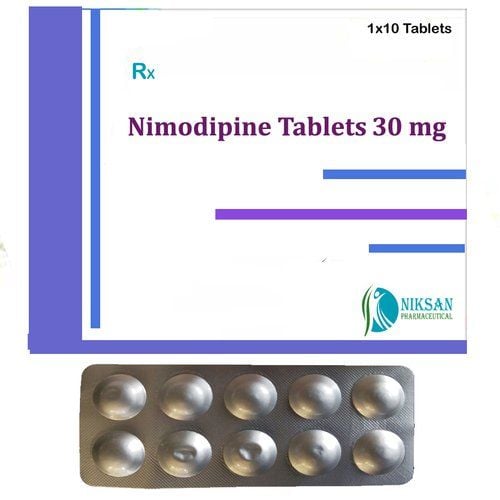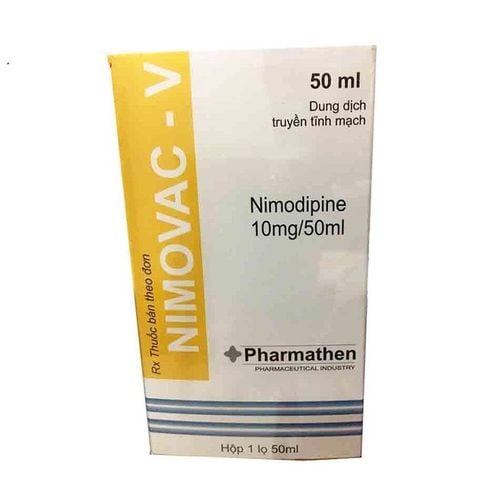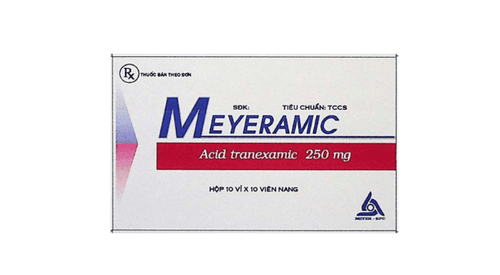This is an automatically translated article.
Vinphyton 1mg drug is indicated in the prevention and treatment of bleeding and the risk of bleeding is increased due to decreased prothrombin blood, bleeding due to coumarin drug treatment,... So what is Vinphyton drug? How to use? Let's find out the necessary information about the use of Ginkokup 40 through the article below.
1. Uses of Vinphyton 1mg
1.1 Indications Hemorrhage and increased risk of bleeding due to hypoprothrombinemia. Bleeding due to coumarin-type drug treatment. Reduce vitamin K in cases of cholestasis, liver disease, intestinal disease or after long-term treatment with broad-spectrum antibiotics, sulfonamides or derivatives of salicylic acid. 1.2 Dosage - How to use Mild bleeding or bleeding tendency:
Intramuscular 10 - 20 mg or 5 - 10 mg orally. A second, larger dose may be used if no effect is seen within 8-12 hours. In general, it is advisable to temporarily stop taking oral anticoagulants.
Severe bleeding due to cholestasis or other causes:
Slow IV infusion (1 mg/min) 10 mg (up to 20 mg) phytomenadion.
Gastrointestinal or intracranial hemorrhage, life-threatening:
Transfusion of fresh blood or plasma with phytomenadion.
Hemorrhagic or threatened hemorrhage in neonates and premature births:
Prevention: 0.5 - 1 mg (1/2 to 1 vial of 1mg), intramuscularly immediately after delivery.
Treatment: 1 mg/kg (1 - 5 vials of 1 mg)/day, intramuscularly for 1-3 days (can be given in milk on the second and third day).
Acute poisoning with oral anticoagulants:
Slow intravenous infusion of 10 - 20 mg phytomenadion, then oral. Monitor prothrombin values at regular intervals (3 hours later) until blood clotting returns to normal. If there is still not enough response, should continue to use. No more than 40 mg of phytomenadion should be administered intravenously in 24 hours.
If the patient is taking the anticoagulant dicumarol during surgery, phytomenadion may counteract the anticoagulant effect. If thrombosis occurs again while taking phytomenadion, and anticoagulation treatment must be transferred to another physician, the patient should be clearly informed that the patient has taken phytomenadion.
1.3 Phytomenadion overdose and handling may cause transient resistance to prothrombin-inhibiting anticoagulants, especially when large doses of phytomenadion are used. If relatively large doses of phytomenadion have been used, a slightly larger than normal dose of a prothrombin-blocking anticoagulant, or a different mechanism of action, such as heparin sodium may be required.
2. Side effects when using Vinphyton 1mg
Drinking may cause gastrointestinal upset, including nausea and vomiting. Injection, especially intravenous administration, can cause hot flashes, sweating, hypotension, dizziness, weak pulse, dizziness, cyanosis, anaphylactoid reactions, allergies, altered taste. Doses greater than 25 mg may cause hyperbilirubinemia in neonates or premature infants. Intravenous administration can also cause severe anaphylactoid reactions (even in drug-nave patients), leading to shock, cardiac arrest, respiratory arrest, and death. Phytomenadion causes skin and respiratory irritation. The drug solution has blistering properties. Rare : Local skin reactions.
Should be injected intramuscularly or subcutaneously. If intravenous injection is required, dilute the drug with 0.9% sodium chloride solution or 5% dextrose solution and then administer intravenously very slowly, not exceeding 1 mg/min; The drug can be injected into the lower portion of the infusion set with 0.9% sodium chloride solution or 5% dextrose solution. When an anaphylactic reaction is observed, 0.5 - 1 ml of 0.1% epinephrine solution should be injected intramuscularly immediately, then intravenous glucocorticoids. Additional blood replacement measures may be performed. The prothrombin time should be checked regularly to adjust the dose, dose interval and duration of treatment. When treating patients with liver failure, it should be noted that some preparations of phytomenadion contain glycocholic acid.
3. Note when using Vinphyton 1mg
Contraindications:
Patients with hypersensitivity to phytomenadion or a certain component of the drug. Intramuscular injection should not be given in cases of high risk of bleeding. Note:
Phytomenadion can cause hemolysis in people with the genetic defect of glucose - 6 - phosphate dehydrogenase deficiency. Taking high doses to people with severe liver disease may further impair liver function. The infant dose should not exceed 5 mg in the first days of life, because the liver enzyme system is immature. The polyethoxidized castor oil contained in phytomenadion injections may cause severe anaphylactoid reactions. This oil, when used for many days for patients, can also produce abnormal lipoproteins, change blood viscosity and cause red blood cell aggregation. In case of major bleeding, a whole blood transfusion or transfusion of blood components is necessary. Pregnancy
Phytomenadion crosses the placenta less. Phytomenadion is not toxic at doses below 20 mg. Therefore, phytomenadion is the drug of choice for the treatment of maternal hypoprothrombinemia and the prevention of neonatal haemorrhagic disease (BCHSS). Maternal vitamin K supplementation is not necessary, unless there is a risk of vitamin K deficiency. A daily menu during pregnancy should contain 45 micrograms of phytomenadion. Lactation
Phytomenadion concentrations in breast milk are usually low. Most milk samples contained less than 20 nanograms/ml, with many samples below 5 nanograms/ml. Although not all, many infants are vitamin K deficient due to less vitamin K passing through the placenta. Breastfeeding alone will not prevent further depletion of this already low vitamin K store and can develop into a vitamin K deficiency within 48-72 hours. In summary, naturally low levels of vitamin K in breast milk do not protect infants from vitamin K deficiency, leading to hemorrhagic disease. Vitamin K may be given to the mother to increase concentrations in milk, but more research is needed. All infants should be given 0.5 - 1.0 mg of phytomenadion for prevention. Larger doses or repeated injections may be required if the mother is taking anticonvulsants or oral anticoagulants.
4. Drug interactions
Dicumarol and its derivatives have an antagonistic effect on vitamin K. Anticoagulants can be reduced or ineffective when used with vitamin K. Therefore, vitamin K can be used as an antidote in case of overdose.
When hypoprothrombinemia is caused by the use of gentamycin and clindamycin, the patient does not respond to intravenous vitamin K.
Storage:
Phytomenadion should be protected from light and stored below 300C. Do not refrigerate phytomenadion injections. Do not use injectable drugs that have separated or have oil droplets present.
Please dial HOTLINE for more information or register for an appointment HERE. Download MyVinmec app to make appointments faster and to manage your bookings easily.













